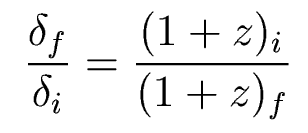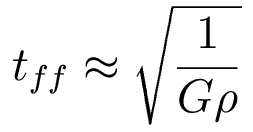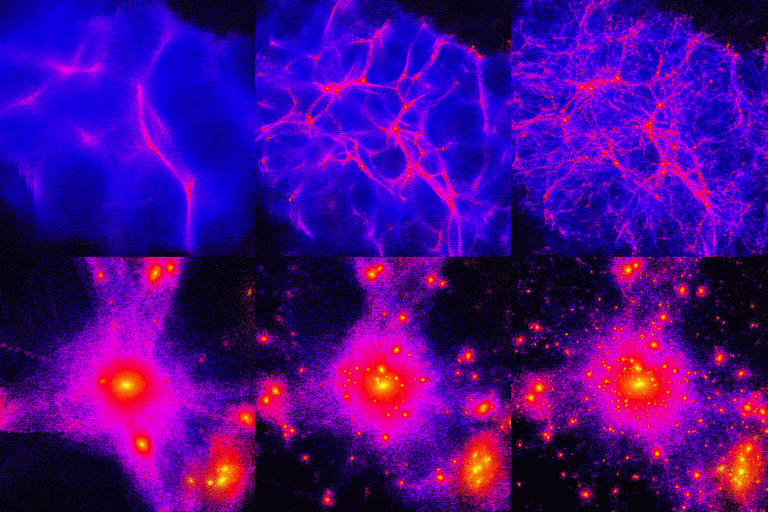
How does this help? Remember that:

But remember that before recombination, the baryons and photons were coupled, and the photons kept the baryons from collapsing under their own gravity. So we can't start earlier if all the mass is baryonic. But if we postulate some sort of matter that doesn't interact with radiation the way baryons do, it can start growing much earlier.
When we look at the CMB, the fluctuations in baryons that we see are sitting on top of much stronger fluctuations in the dark matter. Once recombination occurs, the baryons are free to collapse under gravity, and they quickly fall into the dark matter concentrations to form into galaxies. We think...
Once we get to delta ~ 1, we say that the region has decoupled from the normal Hubble flow, and has started to collapse under gravity. The timescale for gravitational collapse is then on the order of the free fall time:

|
|
|
|
|
|
|
|
|
|
|
|
|
|
|
|
More massive structures are lower in density, and take longer to collapse.
Hot Dark Matter
Because HDM particles are moving so fast, they can escape from small mass density fluctuations. Since it is their mass that makes the density fluctuation, these small fluctuations will essentially dissolve. Calculations for neutrinos suggest that any density fluctuation smaller than about 1015 Msun will dissolve away before recombination, so the baryons won't collapse into small lumps.Cold Dark MatterInstead, only the big surviving lumps will collapse. The scale of these lumps is like that of big clusters of galaxies, which have relatively low overdensities, so the collapse occurs slowly. Then after the big things collapse, fragmentation can occur (like individual stars form out of a bigger collapsing gas cloud). So,
Not like what we see! Hot dark matter doesn't work!
- structure forms slowly
- structure forms "top down"
- galaxies form very late in the Universe's history
CDM particles do not diffuse out of small lumps. So lumps exist on all scales -- small and large. The little things collapse first, and the big things collapse later, incorporating the little things in as they collapse.This gives a much better description of what we see in the universe, and leads to a picture for structure formation called hierarchical structure formation.
- structure begins to form early
- structure forms "bottom up"
- galaxies form before galaxy clusters.
